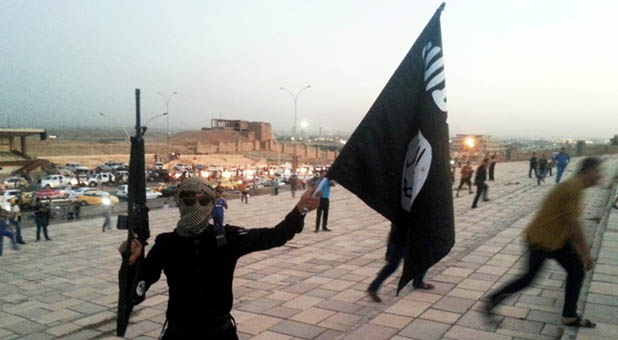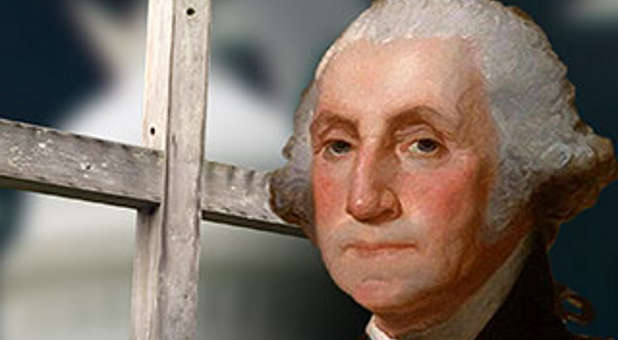One of the major obsessions in the current U.S. presidential campaign is defeating the Islamic State or, as Donald Trump says, “defeating radical Islam.” It is impossible to defeat this threat if we do not understand how radical Islam was created, so that we can effectively suck the oxygen out of the fire.
The three primary states that have served as ground zero for radical Islam are Afghanistan, Iran and Iraq. Washington, led by president Jimmy Carter, put pressure on the pro-Western shah of Iran to ease his control and allow more political freedom, all in the name of human rights. He was prompted to release more than 300 Islamic prisoners, relax censorship and overhaul the Iranian court system. These moves had the unforeseen side effect of allowing greater freedom for radicalized opposition groups to meet and organize—and then overthrow Iran.
The methods used by the Carter administration to coerce the shah into acquiescing to those demands was to withhold replacement parts for the shah’s military equipment: airplanes, helicopters and tanks.
An unnamed State Department employee leaked the information that the U.S. was pleased with the shah’s human rights efforts, and in July 1977, President Carter informed Congress that it was his objective to sell seven AWACS planes to Iran.
After months of congressional wrangling and intense debate, the sale was approved. The final package included an additional $1.1 billion in spare parts and technical instruction. Shortly after secretary of state Cyrus Vance returned to the U.S. from Iran, Carter signed Presidential Decision Memorandum 13. Although the document did not specifically mention arms sales to Iran, the country was noticeably absent from the list of nations that receive American arms largesse.
The shah was decidedly disturbed that the new administration seemed not to value the long-standing liaison with his country. He greatly feared that the USSR would invade Afghanistan if Iran were weakened, that Iraq would take advantage of a weakened Iran and would invade and that Khomeini would succeed with his call for an Islamic revolution in Iran.
Once the shah had been weakened to the breaking point, president Carter called for a summit on the French Republic island of Guadeloupe in the Caribbean. Invited to meet with him in January 1979 were French president Valery Giscard d’Estaing, West German chancellor Helmut Schmidt and British prime minister James Callaghan.
It was at Guadeloupe, according to my interview with d’Estaing, that Carter showed his hand in favor of the ouster of the shah.
At the Guadeloupe summit, Secretary Vance approached the president and asked that he “be authorized to open a direct channel to Islamic fundamentalist Ayatollah Ruhollah Khomeini in Paris.” President d’Estaing expressed his shock at Carter’s lack of regard for a country that had been a close ally for decades: “He was a bastard of conscience, a moralist, who treats with total lightness the fact of abandoning a man that we had supported together,” he told me. This was also confirmed in my interview with General Robert Huyser, then commander in chief of the U.S. Air Force Military Airlift Command, and other diplomats in Iran at the time.
After the Russians invaded Afghanistan in December 1979, the U.S. and Saudi Arabia poured cash into that country, to the tune of $500 million annually between 1986 and 1989, to fund opposition groups such as the Mujahedeen and others, including Osama bin Laden. There is no doubt that attempts by the U.S. to recruit and fund Islamic radicals in Afghanistan gave birth to radical Islam.
Tens of thousands of Islamic radicals from over 40 countries made their way to Afghanistan to join the holy war against the Russians. Besides providing teachers and advisers, the U.S. supplied war materiel such as rifles, grenade launchers, mines, SA-7 light anti-aircraft weapons, thousands of state-of-the- art, shoulder-fired Stinger anti-aircraft missiles and delayed timing devices for tons of C-4 plastic explosives.
Then, of course, there is Iraq. It was a secular state with Saddam Hussein, a thug, as president. He first had the support of the U.S. While Hussein’s Ba’ath Party came to power in 1963, there is some suggestion that he had been supported by the CIA several years before his rise. Saddam had been tapped in an attempt to assassinate then-leader Abd al-Karim Qassem. When Iran and Iraq went to war in the 1980s, the U.S. provided hundreds of millions of dollars, ostensibly in food credits, but instead used to purchase weaponry from the Soviet Union and France.
In March 1988, Iraqi planes dropped canisters thought to contain mustard gas and nerve agents tabun and sarin over the Kurdish city of Halabja. At the time, the city was held by Hussein’s troops. Accustomed to taking shelter underground from Iranian warplanes, the families in Halabja took refuge in basements across the city. What they could not have known was that the gas would seek the lowest places in the city. Basements literally became death chambers for those seeking asylum. It is estimated that more than 5,000 perished from complications of inhaling the fatal concoction as the gas spread.
The U.S. Senate reacted to the horror that was Halabja by passing the Prevention of Genocide Act. The House, however, passed an emasculated version of the Senate proposal. The administration, still believing that Hussein might become a viable ally in the region, was prone to overlook this and similar acts that killed the Kurds in northern Iraq.
The term “blowback” was coined by the CIA to describe “the unintended consequences of covert operations.” If the Middle East is destabilized, if an ally is intentionally overthrown as was the shah of Iran, if a madman is underwritten in Iraq, and if terrorists are supported in Afghanistan, the result is blowback.
To defeat ISIS and radical Islam and not create a plague of suicide bombers hitting the West necessitates a recruiting base for Islamic fanatics to go to so we can kill them. The best approach is to not fully defeat ISIS but limit them to a small strategic spot in the Middle East—one chosen by us. Jihadists can be invited to gather there and wage war. Global lone wolves cannot be stopped; it’s better to confine them to the Middle East.
This article previously appeared at JPost.com. Used with permission.
See an error in this article?
To contact us or to submit an article






















